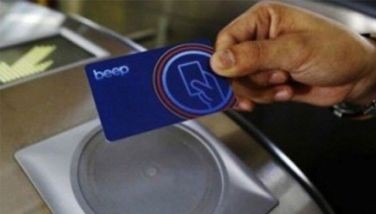Traveling in pain
Traveling during the start of the winter season in the United States can be such a pain. Aside from security concerns, there’s the possibility of getting stuck in the airport due to weather changes. One of my biggest fears is to be stranded in the tarmac for several hours. The delay virtually keeps you hostage, compounded by the fact that you have to endure rising cabin temperature made worse by passengers whose tempers become heated up as the minutes and hours go by. A number of carriers have suffered from the bad publicity due to delays, like American Airlines with reports that 67 of its planes all over the US were stranded for more than three hours because of storms in Texas last December – an experience which passengers described as “inhuman.” One flight was delayed for eight hours, during which time a mother was reportedly forced to make diapers out of clothes because she ran out of disposables. At the JFK airport, nine JetBlue planes got stranded on the tarmac for more than 10 hours because of an ice storm.
Airline delays have become such a nightmarish experience in the US with officials admitting the worst record of delays since 1996, with airport congestion experienced the most in New York. Reports say 38 percent of all flights in Newark Liberty, John F. Kennedy and La Guardia were either late or cancelled, leading to flight disruptions all over the US. This has become such a problem that people are calling the situation a “serious national crisis of delays.”
George Bush himself acknowledged that they’ve “got a problem, we understand there’s a problem, and we’re going to address the problem,” calling the Transportation Secretary and aviation officials to the Oval office for a meeting. While US officials are encouraging airlines to conduct measures to solve delays and lessen the congestion, government has also warned about imposing mandatory rules – and the alternative of returning to the days of government-regulated flights and limited competition. In 1978, the US began airline deregulation as part of price reduction for air transport fees and relaxing entry controls.
Obviously, the situation has changed a lot since then. One option is to cut down on the number of flights by flying one large plane instead of two. Another is for airports to impose higher landing fees during peak hours. In the US, there are more than 87,000 flights on any given day. Close to 30,000 of these flights are commercial in nature. No doubt the situation could get worse especially with the warning issued the other day by the US National Air Traffic Controllers Association about worsening delays especially during the holiday season due to the 7.5 percent reduction in the number of fully-trained controllers. Many controllers have left the workforce due to tight FAA work regulations, compounded by a collective bargaining agreement that still hangs in the balance.
Meantime, passengers are getting more frustrated since they have to bear the brunt of this troublesome situation. In fact, a consumer advocacy group is pushing for a “passenger’s bill of rights” – which some Democrat and Republican politicians are pushing. Under the bill, passengers can deplane after four hours on the tarmac. Airlines would also be required to stock up on enough food and water, maintain sanitary conditions (there were reports of toilets overflowing) and keep passengers informed about the cause and timing of delays. Airlines which fail to comply with these requirements can be sued by passengers.
We’re fortunate the Philippines hasn’t reached the same magnitude of delays, but that doesn’t mean the country’s airports – outdated and limited in number as they are – won’t be experiencing the same problems in the near future. Perhaps there’s wisdom in limiting the number of airlines coming in to the Philippines, since an open skies policy could create problems that authorities won’t be able to handle. As pointed out by the Foreign Chambers of the Philippines, runway restrictions limit NAIA’s capacity to handle flights. The international runway can only accommodate 15 flights per hour during bad weather conditions or at night. No question NAIA’s terminals are outdated and below standard for modern aircraft. Terminal 1 is almost three decades old and is getting difficult to maintain. Passengers (which include foreigners traveling to provincial tourist spots) particularly at the old domestic terminal have to suffer long lines and are exposed to bad weather conditions especially during peak periods.
Tourist arrivals in the Philippines increased by as much as 14 percent last year. If this trend continues, the Tourism Department’s target of three million visitors by yearend and five million by 2010 could be achieved. While the growth in tourist arrivals is encouraging, an increased number of flights will require heavy maintenance and a more efficient system of processing. With the Christmas season drawing near, Philippine airports will get even more congested with a lot of complaints about long lines and baggage getting lost. We need to accommodate not only the growing number of tourists but the influx of OFWs for the Christmas Season. There are approximately 8 million OFWs deployed all over the world, and their numbers are expected to increase. We certainly hope the government has the vision to move fast enough to modernize our airports and start fully developing Clark as a complementary airport to NAIA. Otherwise, things could get worse especially with the advent of new generation aircraft like the Airbus 380 – which could bring us to a “national crisis of delays” which the United States is experiencing today.
* * *
Email: [email protected]
- Latest
- Trending






























